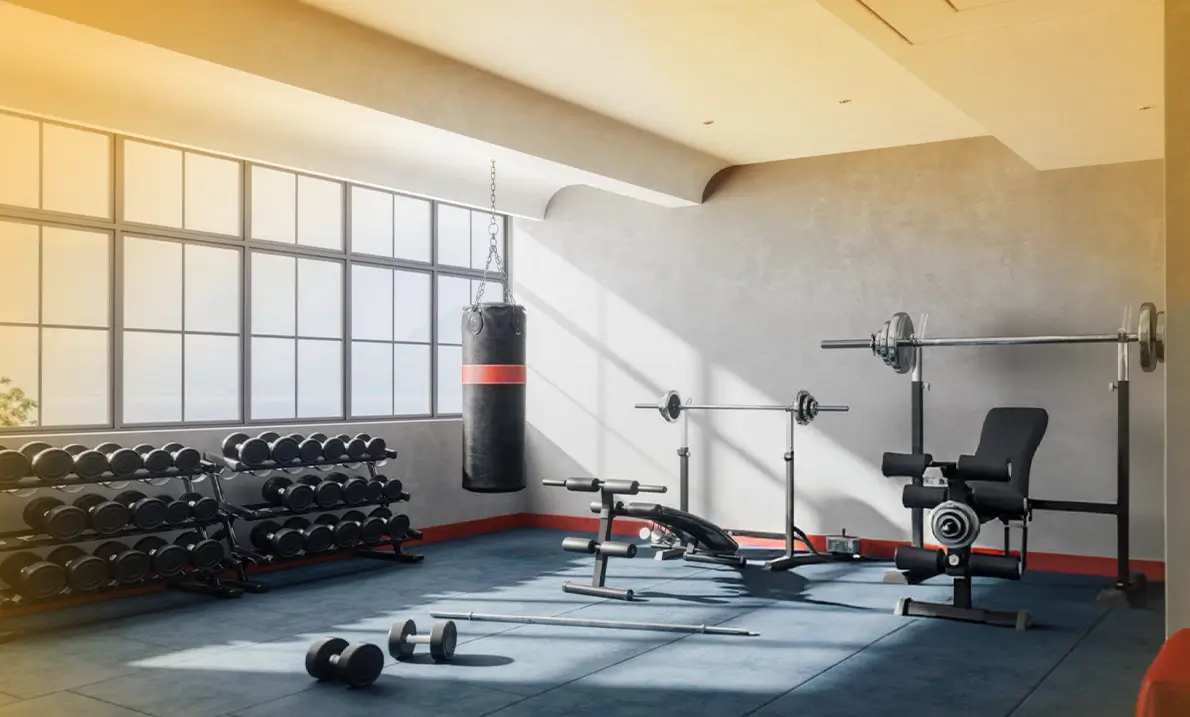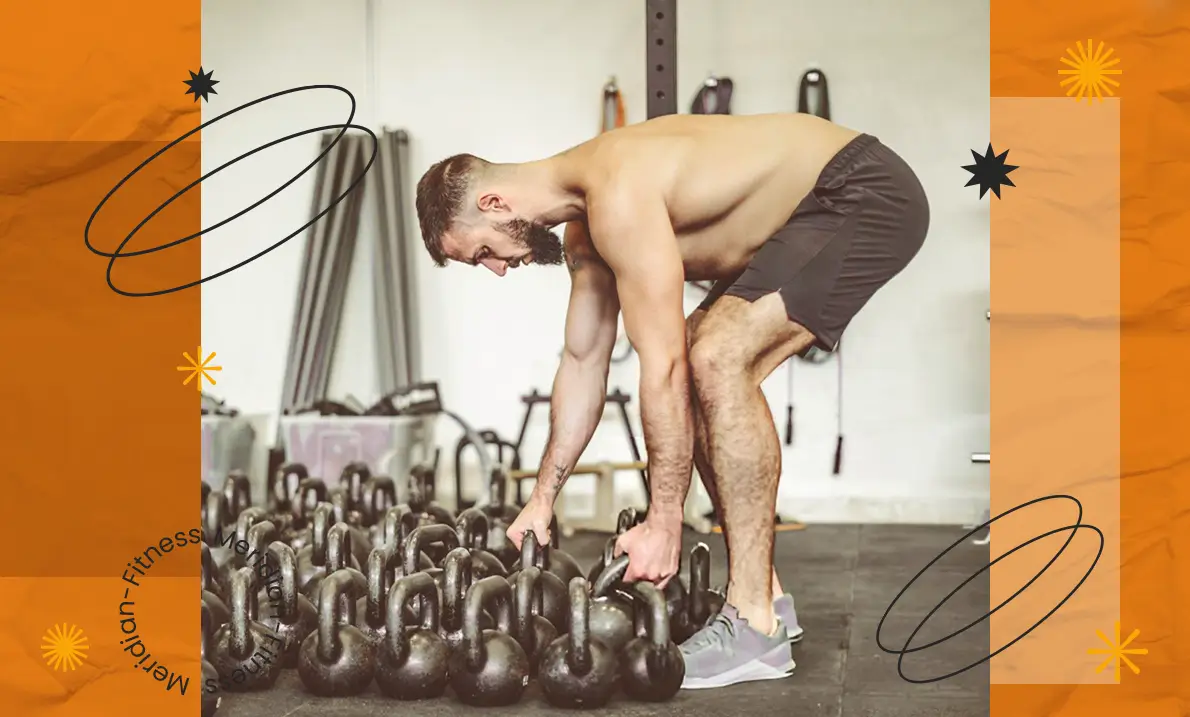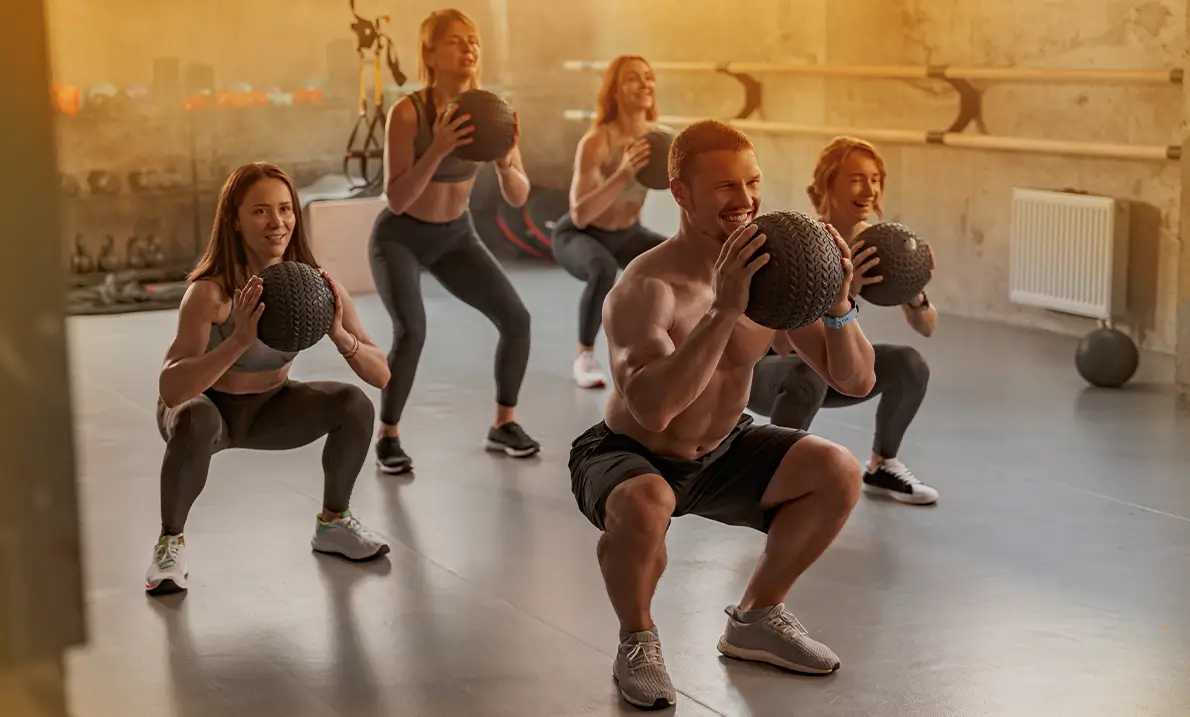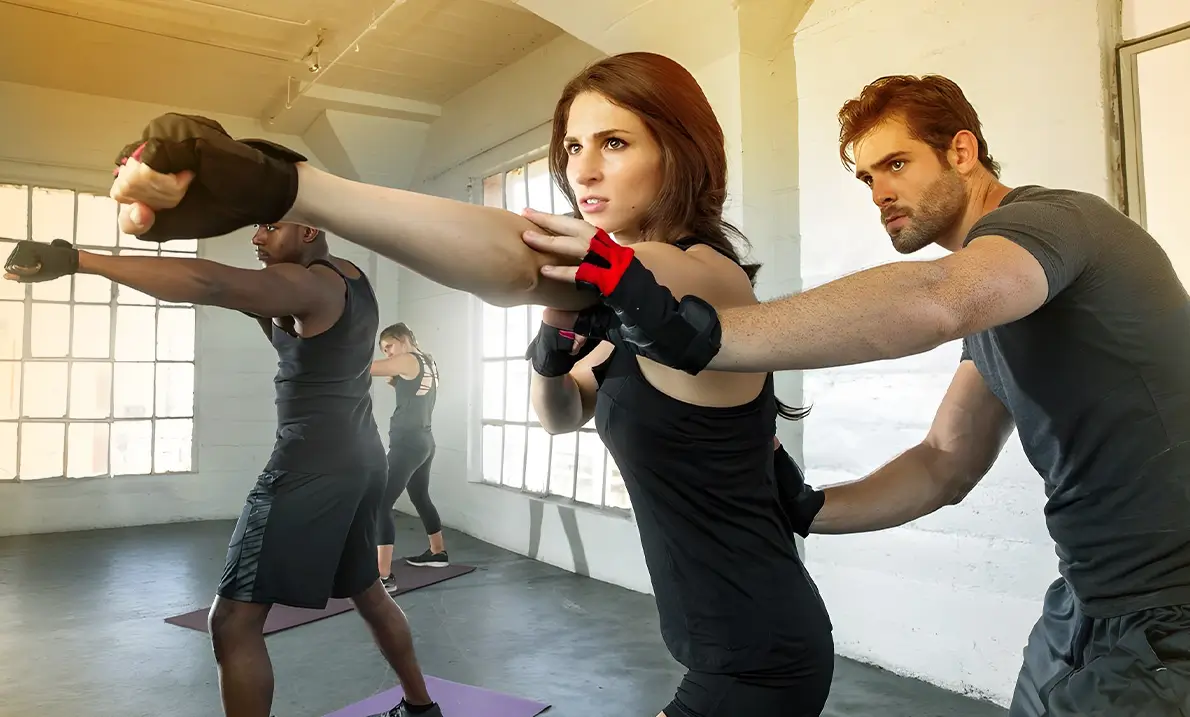Do you know you can achieve toned bodies and fitness goals more quickly and in less time now? Yes, that is what circuit training is for. Due to our hectic work routine, we do not always have an hour or at least 45 minutes to properly work out at the gym. Now, we do not have to worry about being unable to take time for a workout routine. With circuit training, we will be able to achieve all our fitness goals in less time.
Imagine a hardcore, intense 30-minute workout that combines strength and aerobic training, making you eager to work out again. Let’s learn more about circuit training and how we can build one for ourselves.
What Is Circuit Training Workout?
Circuit training is basically a mode of workout routine that involves performing a quick series of 5 to 10 exercises targeting different muscle groups. These exercises range from strength to cardio, with minimal to zero rest between each exercise. As a result, it will work on the cardiorespiratory system and build muscular strength and endurance.
Depending on how you feel, you can even set a time for each exercise( 30-60 secs) or a number of repetitions (8-20 reps) for each exercise. You can take a little longer than 1 minute of rest after completing one circuit of exercises. Repeat the circuit 3-4 times according to your allocated workout time duration.
What Are The Benefits Of Circuit Training
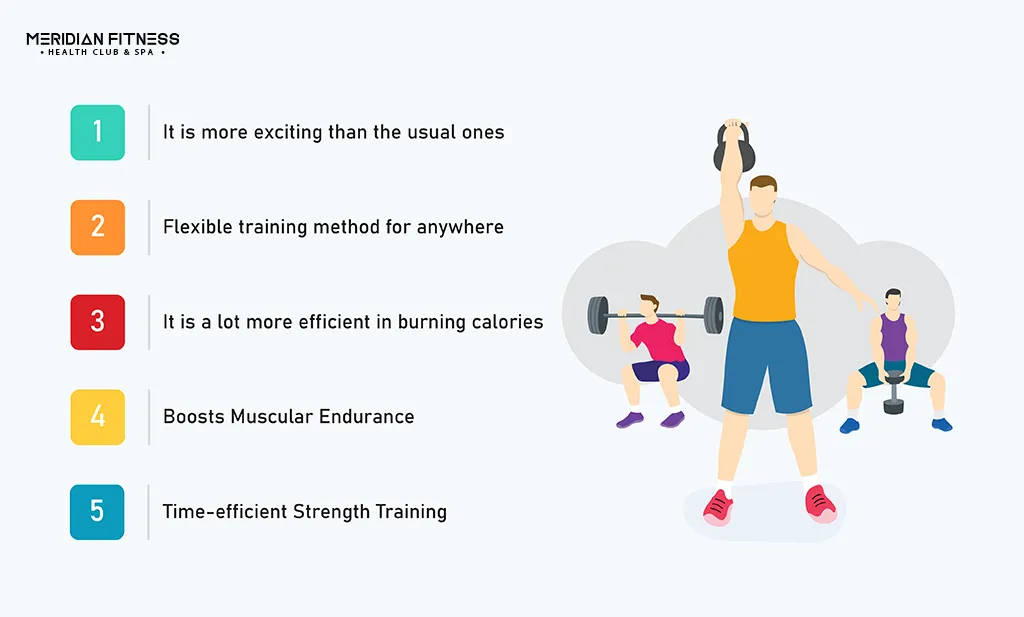
Circuit training routine offers some real edge benefits compared to classic workout routines. Some of the most cherished ones are the following:
1. It is more exciting than the usual ones
For beginners who are unable to create routines and become addicted to gym training or those who are tired of doing the same exercises, circuit training gyms can really spice things up.
2. Flexible training method for anywhere
Circuit training is a really flexible and customisable training mode that can be done at home, at the gym, or anywhere. It can also be done with just dumbbells or body weight, providing countless ways to customise a workout.
3. It is a lot more efficient in burning calories
As it mixes up the cardio and strength training, it becomes more efficient in shedding pounds effectively and building muscular strength.
4. Boosts Muscular Endurance
Circuit training is a powerhouse for building muscular endurance. The secret lies in its dynamic, fast-paced nature: a series of exercises performed with minimal rest. This amps your average workout and creates a full-body symphony that increases muscle endurance and builds stamina.
5. Time-efficient Strength Training
According to Harvard Medical School, a 30-minute circuit training workout can burn 200 to 300 calories, which is quite time-efficient.
Build the Perfect Circuit Training Workout That Delivers Results
It’s time to build your perfect circuit training plan. Ready? We know it can be daunting at first, so we’ve created a simple guide to help you build your result driven workout routine. If you have concerns or need assistance, you can always try a circuit training gym nearby. So, let’s start!
1. Determine The Time You Have For Workout
It is about making your workout effective, so the first step is to determine how much time you have or want to work out. This will help you commit your time and design the circuit training accordingly. For the ideal results, it is advised not to assign more than 3-4 minutes to each of your exercises in a circuit. Also, rest for a few minutes after each circuit.
2. Choose Your Exercises For Groups Of Muscle
Now is the time to select exercises for each muscle group workout. To ensure you have chosen exercises for a full-body workout, try this way.
a. Upper Body Exercises
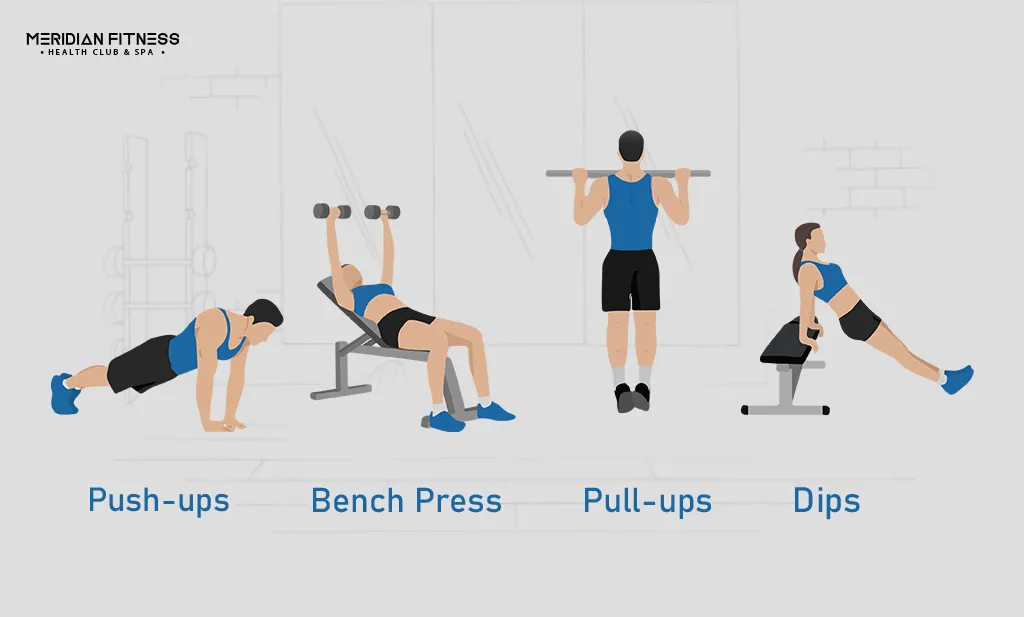
To keep your workout effective, you must pick up 3-5 exercises for each group of muscles. Start by choosing exercises for the upper body, such as:
- Push-ups: Keep it 13-15 reps and inhale as you bend and exhale as you raise.
- Pull-ups: A classic exercise that works on core and shoulder muscles.
- Dips: It is a perfect bodyweight exercise that helps build tricep and back muscles.
- Bench Press: A compound exercise for the chest and shoulder muscles.
Tips: Avoid back-to-back exercises and use alternate ones.
b. Lower Body Exercises
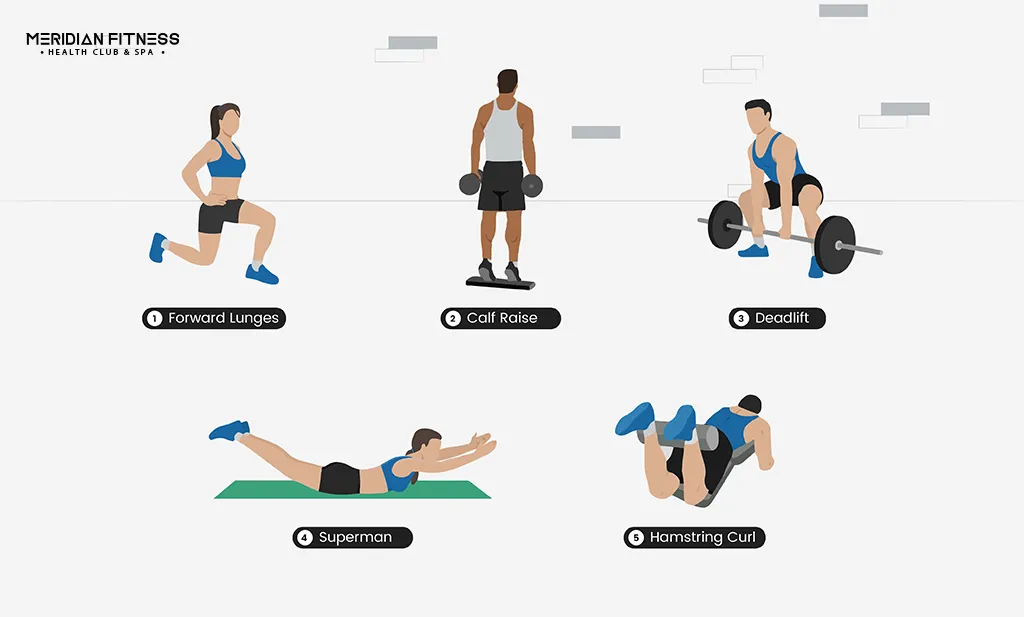
As we have selected exercises for the upper body, we will now choose exercises for the lower body. Moreover, depending on your time and training level, you can pick alternates for each circuit or do all of them in all circuits. Try these powerful lower-body exercises, which are:
- Forward Lunges: A strength training exercise that works on the quadriceps, calves, and hamstrings.
- Calf Raise: It works on lower leg muscles and builds stability.
- Deadlift: A compound exercise that works on the core, shoulders, back, and leg muscles.
- Superman: It is a bodyweight exercise that improves posture and strengthens spinal bones.
- Hamstring Curl: This exercise works on leg muscles and can be done with a dumbbell on the machine or just with body weight.
c. Include Compound Exercises In Your Circuit
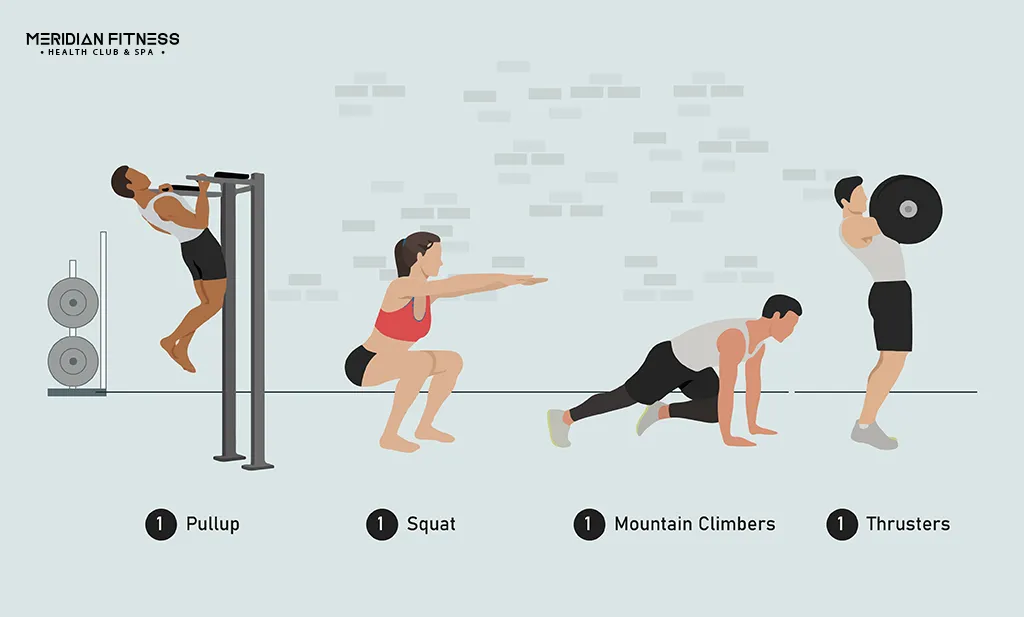
As the name suggests, these exercises simultaneously work on multiple muscle groups, building strength and burning calories. Some of the most effective and popular compound exercises are the following:
- Pullup: Targets upper body muscles, including shoulders, back and core.
- Squat: Works on the glutes, legs, knee joints, and back muscles.
- Mountain Climbers: This bodyweight exercise works on the core, back, and shoulder muscles.
- Thrusters: It works on the back, shoulders, and leg muscles.
3. Add Cardio To Your Circuit
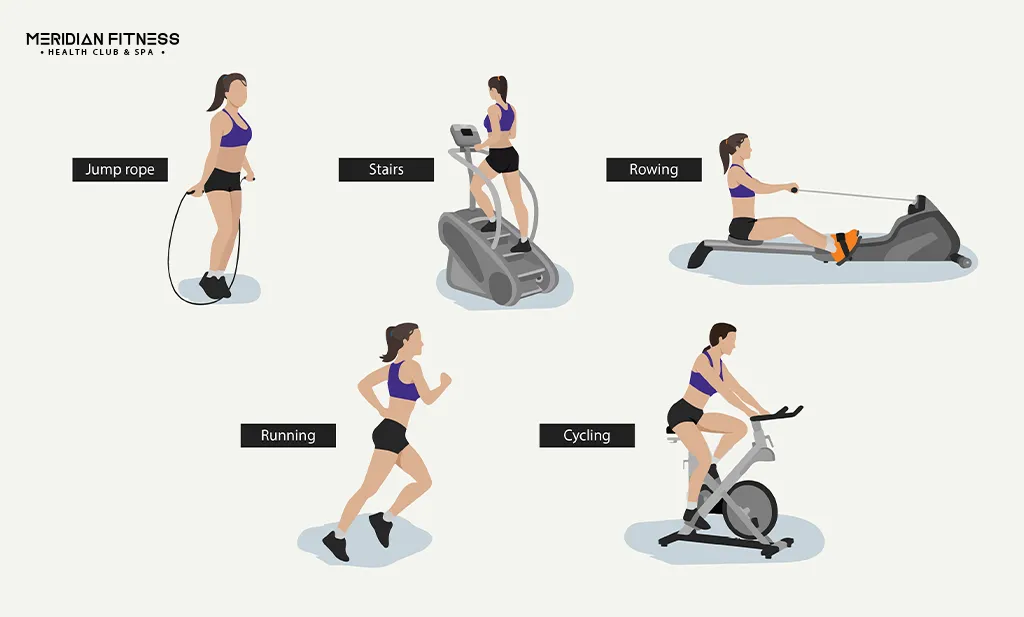
As per research, adding quick cardio sprints in the middle or end of the workout is a very effective way to burn the fat off. Hence, add fast and short cardio snaps to get the most fat-burning circuit training. You can pick any cardio exercise of your liking, like
- Jump rope: It is a fun exercise and an effective cardio workout.
- Cycling: It can be done both ways, while circuit training at a gym cycling machine is the best option.
- Running: A treadmill lap with more speed than usual is the best cardio.
- Rowing: It is also one of the great cardio exercises that targets all major muscles.
- Stairs: Climbing stairs works on the cardiovascular and respiratory systems and is an effective cardio exercise.
Example Of Circuit Training Workout
Here is a simple example of a circuit training workout that will help you understand better!
| Circuits | Upper Body | Lower Body | Compound | Cardio | Breaks |
| Circuit 1 | Push-ups (13 reps) | Forward Lunges (13 reps) | Mountain Climbers (13 reps) | Cycling (6-7 minutes) | 1-2 minute Break (drink water) |
| Circuit 2 | Pull-Ups (13 reps) | Hamstring Curl (13-15 reps) | Squats (13-15 reps) | Running(6-7 minutes) | 1-2 minute Break (Drink water) |
| Circuit 3 | Bench Press (13 reps) | Superman (13 reps) | Thrusters (13 reps) | Rowing (15 reps) | Break and Stretch |
4. Perform Each Exercise for 1 to 3 Minutes
Warmup is Necessary Before Starting a Workout
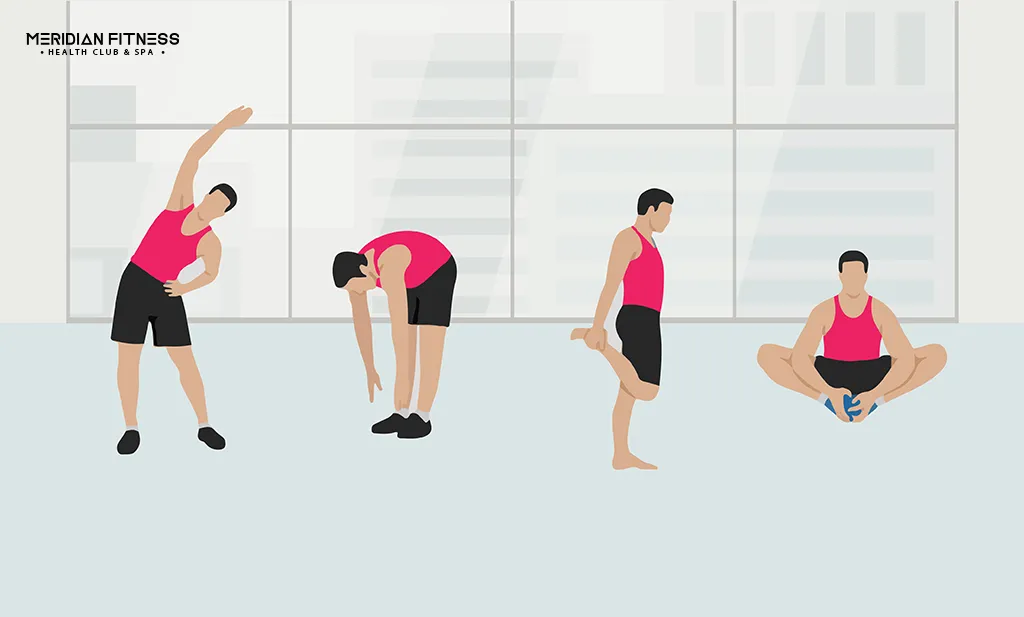
Before starting circuit training, you need to exercise for at least 5-10 minutes to warm up your body and signal your mind that you are about to begin training. This helps your body increase blood flow, avoid injury, and work out better.
Additionally, warming up improves muscle elasticity and expands the range of motion, promoting greater agility and precision in movements. Furthermore, it minimises muscle fatigue, enabling you to extend your workouts and train more intensely.
Start Your Circuit Training
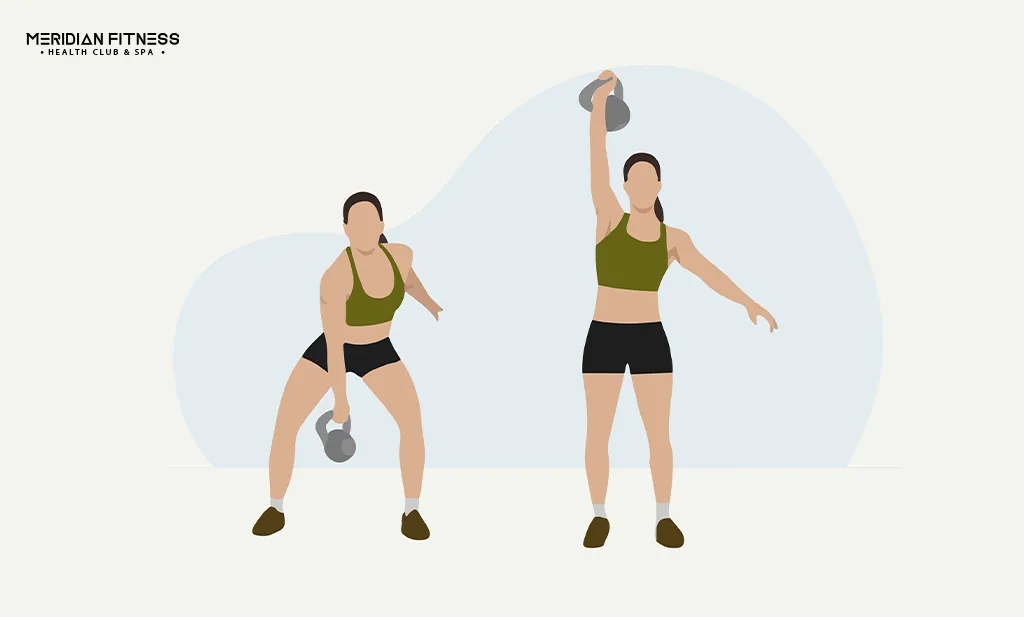
Start your circuit by picking exercises from the three categories mentioned above. Avoid working on the same group of muscles for longer. Instead, after working out on arms and shoulders, exercise on the legs so the arms can rest. As mentioned earlier, you can always choose a duration or rep count to measure and plan the circuit workout.
For the time, try to do an exercise for 2-3 minutes, and then rush to the next exercise. If you prefer to work according to reps, which is easier to count, perform 13- 15 reps of each exercise and start the next without any break.
5. Complete 2-3 Full Circuits
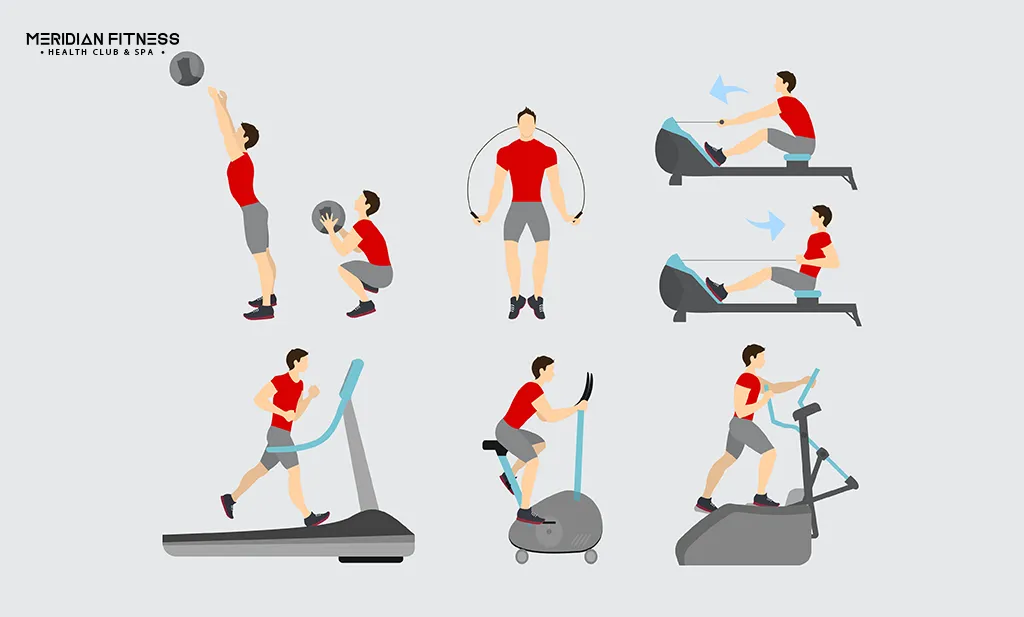
Complete one circuit of 5-10 exercises each(depending on your availability) and rest for 1-3 minutes maximum. Aim to repeat the circuit at least 2-3 times before you call this workout of the day. Lastly, do not forget to track the number of reps or times for each exercise while working out for better performance.
A Pro Tip: Add cardio at the end of every circuit for the most calorie-burning exercise. It will help you, so take a breath break before starting the next.
Remember to keep breathing during the workout and focus on body form. Last but not least, it is important to drink plenty of water during the workout.
6. Warm Up And Cool Down Properly
Once you’ve completed 2-3 circuits, take 10-15 minutes to cool down with some stretches. It is really beneficial to stretch all major muscles for at least 30 seconds each. Stretching will also help reduce muscle achiness and soreness. Moreover, stretching can help improve your focus and concentration, allowing you to train more efficiently.
7. Tips For Effective Circuit Training
To make sure you do not skip any stone unturned and get the best results, try the following circuit training tips, which are:
- Before starting the circuit training, define the clear, achievable goals
- Never Forget to Warm Up
- Starting from a small number of exercises and reps
- Always alternate exercises for the upper body and lower body
- Keep rest time as minimum as possible
- Gradually increase the number of reps and weights to intensify your workouts.
Bottom Line
In conclusion, circuit training effectively does full-body work in less time and more efficiently. It is definitely a challenging but rewarding workout that burns calories like nothing else. Moreover, it greatly improves cardiovascular health, builds muscle strength, and burns fat. Circuit training is a great option if you are looking for a new and effective way to get in shape.
Give it a try today, or get some help from the experienced trainers at the circuit training gym and see how it can help you reach your fitness goals.
FAQs
What is the best circuit for beginners at the gym for a full-body workout?
The best workout for beginners can include 8 to 10 simple exercises in a circuit, such as jumping jacks, squats, and pushups, with minimal to no rest.
How many sets and reps should we do in a circuit training workout?
For beginners, start with 1-2 exercises with 9-12 reps each.
How practical is full-body circuit training?
Being easy to set up and done anywhere, full-body circuit training is practical.

